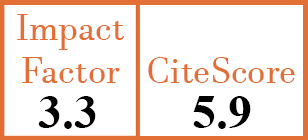Reviews
Assessing the efficacy of anticoagulation therapy in the treatment of vascular Behçet's disease: a systematic review
M. Omar1, F. Hassan2, M.E. Naffaa3
- Division of Data-Driven and Digital Medicine (D3M), Department of Medicine, Icahn School of Medicine at Mount Sinai, New York, NY, USA. mahmudomar70@gmail.com
- The Rheumatology Unit, Galilee Medical Center, Naharyia; and The Azrieli's Faculty of Medicine, Bar-Ilan University, Safed, Israel.
- The Rheumatology Unit, Galilee Medical Center, Naharyia; and The Azrieli's Faculty of Medicine, Bar-Ilan University, Safed, Israel.
CER18043
2025 Vol.43, N°10
PI 1799, PF 1809
Reviews
Free to view
(click on article PDF icon to read the article)
PMID: 40964810 [PubMed]
Received: 05/08/2024
Accepted : 04/12/2024
In Press: 17/09/2025
Published: 23/10/2025
Abstract
OBJECTIVES:
Behçet’s disease (BD) often presents with vascular complications, termed vascular Behçet’s disease (VBD). While immunosuppression (IS) is the cornerstone of treatment, the role of anticoagulation (AC) is debated. This systematic review aims to consolidate and summarise the current evidence on the efficacy and safety of AC in VBD, especially considering emerging studies post-2018 European Alliance of Associations for Rheumatology (EULAR) recommendations.
METHODS:
We conducted a systematic search across PubMed, Embase, Web of Science, and Scopus up to January 2024, adhering to PRISMA guidelines. We included studies that investigated the impact of AC on VBD outcomes, using the Joanna Briggs Institute tools for data extraction and risk of bias assessment.
RESULTS:
Our search yielded 2,202 articles, with 34 studies meeting inclusion criteria. Results indicate variable AC coverage, from 10.8% to 98.6% across studies, with different anticoagulants employed. Some studies highlighted significant benefits of AC in reducing thrombotic events and improving surgical outcomes, whereas others showed neutral or limited effects. Safety profiles were generally favourable, with low incidences of significant bleeding.
CONCLUSIONS:
AC therapy can be beneficial in certain contexts of VBD, particularly in reducing thrombosis recurrence and managing postoperative complications. However, the benefits of AC are not uniformly demonstrated across all patient settings, suggesting a tailored approach to AC use in VBD might be warranted. The findings underscore the necessity for randomised controlled trials to clarify the optimal therapeutic strategies for AC in conjunction with IS in BD.



